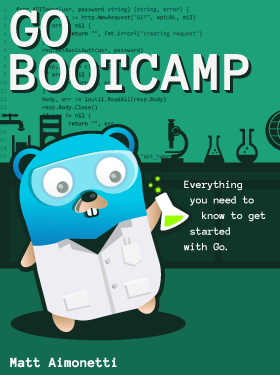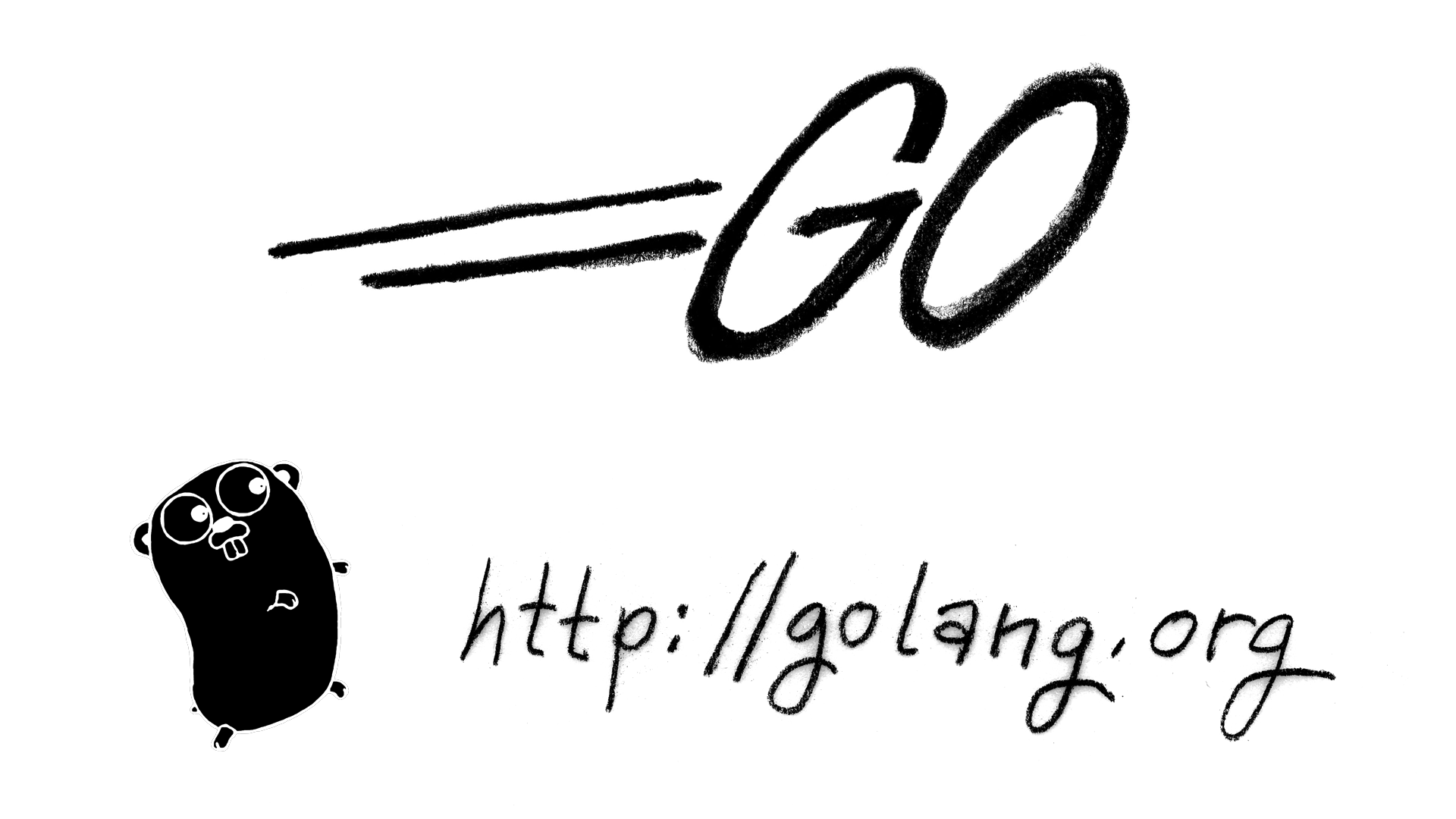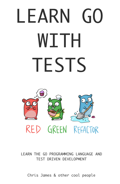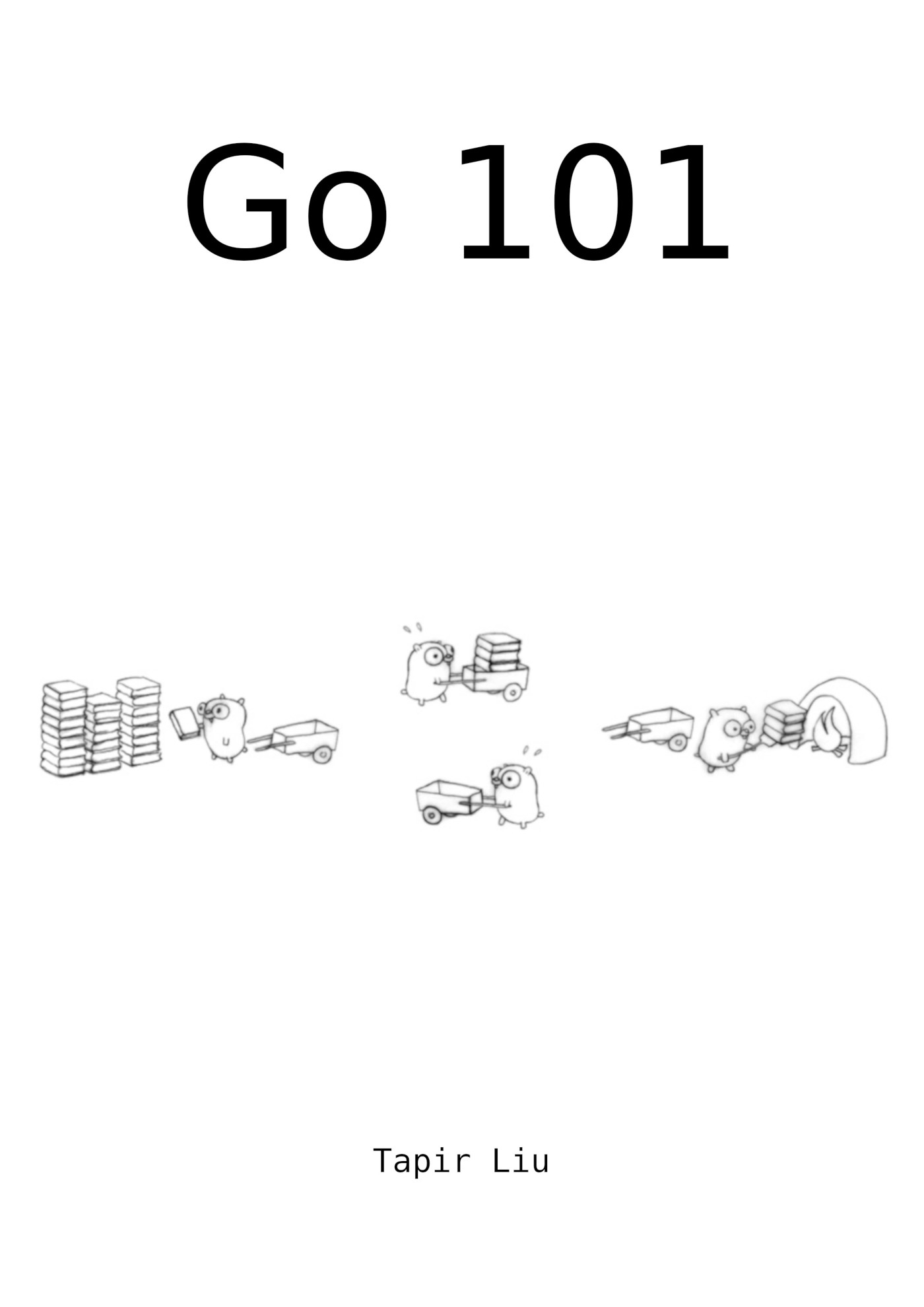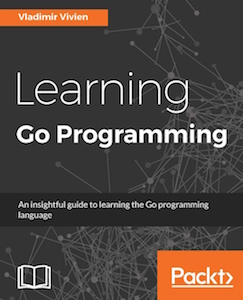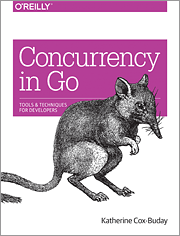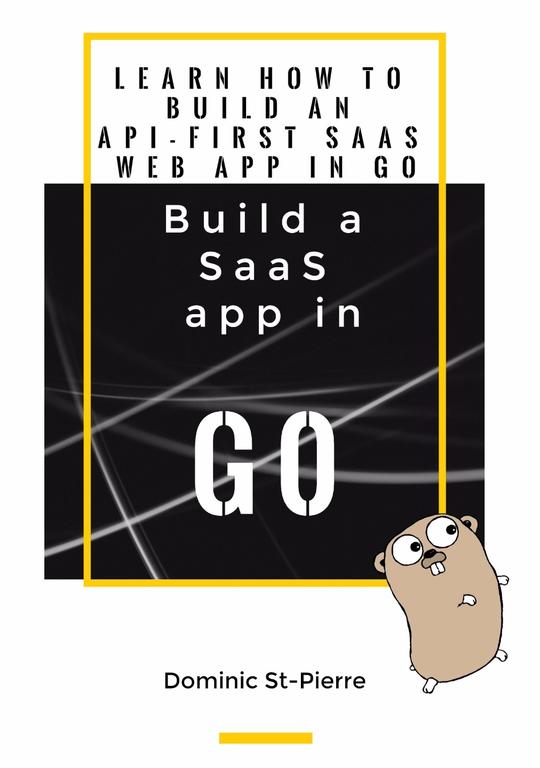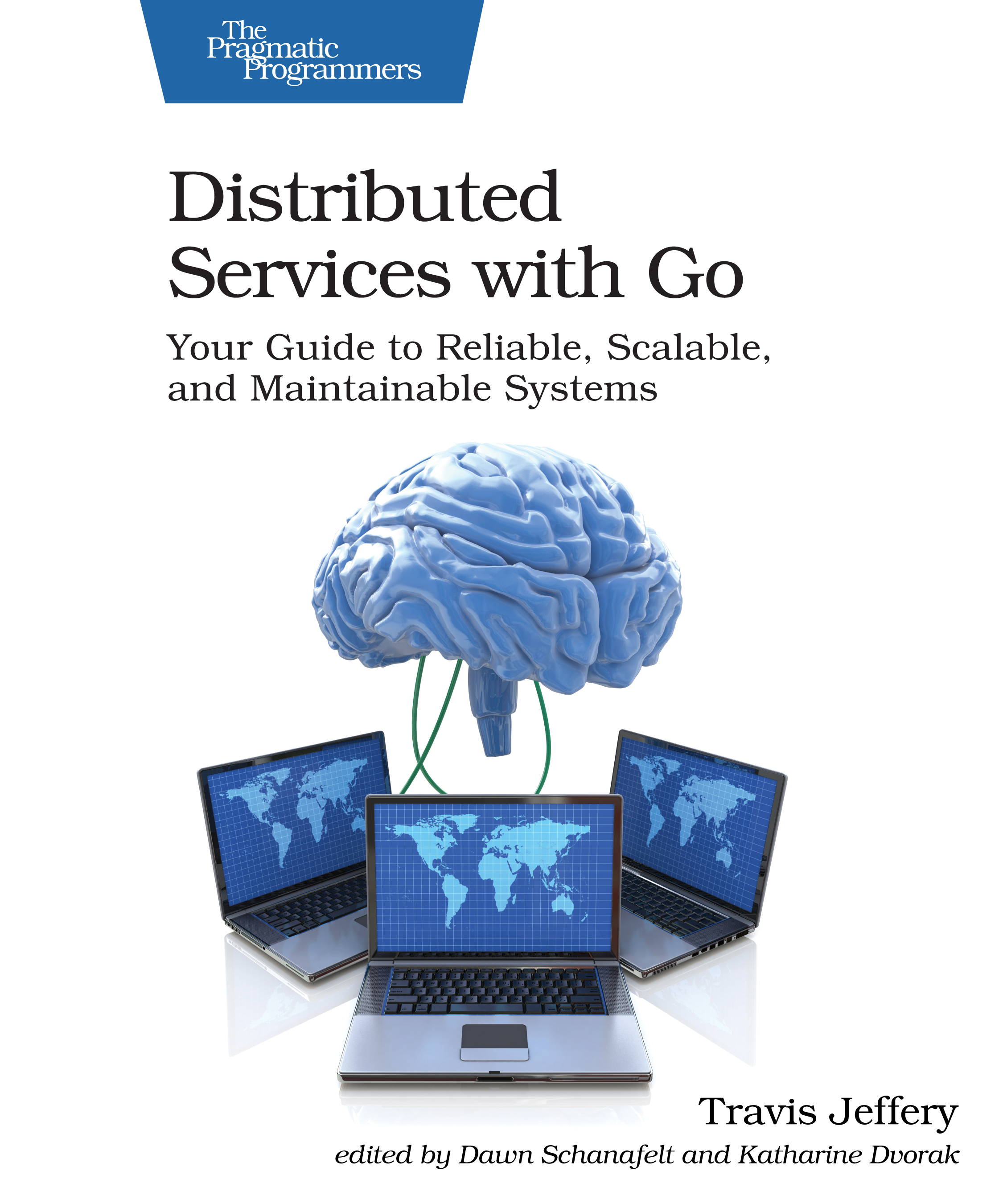The Little Go Book Free
The Little Go Book is a free introduction to Google's Go programming language. It's aimed at developers who might not be quite comfortable with the idea of pointers and static typing. It's longer than the other Little books, but hopefully still captures that little feeling.
This book is a short, concise introduction to computer programming using the language Go. Designed by Google, Go is a general purpose programming language with modern features, clean syntax and a robust well-documented common library, making it an ideal language to learn as your first programming language.
This book is free to read online or pdf form.
Go Bootcamp Free
This companion book contains material initially written specifically for this event as well as content from Google & the Go team under Creative Commons Attribution 3.0 License and code licensed under a BSD license.
Learning Go Free
A online book to start learning Golang. It features numerous exercises (and answers).
The markdown source is available on Github.
This book helps Javascripters become Gophers. Outlining the differences between these languages makes it easier to switch back and forth, and can help mitigate potential issues when doing so.
Learn Go With Tests Free
Learn Go guided by tests. Write a test, learn a new Go language feature to make it pass, refactor and repeat. You'll get a grounding in test-driven development and importantly understand the principles behind it.
Go 101 Free
Go 101 is a book focusing on Go syntax/semantics and all kinds of runtime related things (Go 1.17-pre ready) and tries to help gophers gain a deep and thorough understanding of Go. This book also collects many details of Go and in Go programming. It is expected that this book is helpful for both beginner and experienced Go programmers.
Go in Action introduces the Go language, guiding you from inquisitive developer to Go guru. The book begins by introducing the unique features and concepts of Go. (We assume you're up to speed with another programming language already, so don't expect to spend a lot of time rehearsing stuff you already know.) Then, you'll get hands-on experience writing real-world applications including web sites and network servers, as well as techniques to manipulate and convert data at speeds that will make your friends jealous. In the final chapters, you'll go in-depth with the language and see the tricks and secrets that the Go masters are using to make their applications perform. For example, you'll learn to use Go's powerful reflection libraries and work with real-world examples of integration with C code.
This book shows you how to build powerful systems and drops you into real-world situations. Scale, performance, and high availability lie at the heart of our projects, and the lessons learned throughout this book will arm you with everything you need to build world-class solutions.
Programming in Go brings together all the knowledge you need to evaluate Go, think in Go, and write high-performance software with Go. Summerfield presents multiple idiom comparisons showing exactly how Go improves upon older languages, calling special attention to Go’s key innovations. Along the way, he explains everything from the absolute basics through Go’s lock-free channel-based concurrency and its flexible and unusual duck-typing type-safe approach to object-orientation.
The Go Programming Language is the authoritative resource for any programmer who wants to learn Go. Alan A. A. Donovan and Brian W. Kernighan show you how to write clear and idiomatic Go to solve real-world problems. The book does not assume prior knowledge of Go nor experience with any specific language, so you'll find it accessible whether you're most comfortable with JavaScript, Ruby, Python, Java, or C++.
The book features hundreds of interesting and practical examples of
idiomatic Go code that cover the whole language, its most important libraries,
and a wide range of applications.
Source code is freely available for download from the book's companion web site
gopl.io,
and may be conveniently fetched, built, and installed using the go get command.
Perfect for beginners familiar with programming basics, this hands-on guide provides an easy introduction to Go, the general-purpose programming language from Google. Author Caleb Doxsey covers the language's core features with step-by-step instructions and exercises in each chapter to help you practice what you learn.
Get Programming with Go introduces you to the powerful Go language without confusing jargon or high-level theory. By working through 32 quick-fire lessons, you'll quickly pick up the basics of the innovative Go programming language!
Go, commonly referred to as golang, is a programming language initially developed at Google in 2007. This book helps you to get started with Go programming. It describes all the elements of the language and illustrates their use with code examples.
Solve your Go problems using a problem-solution approach. Each recipe is a self-contained answer to a practical programming problem in Go. Go Recipes contains recipes that deal with the fundamentals of Go, allowing you to build simple, reliable, and efficient software. Other topics include working with data using modern NoSQL databases such as MongoDB and RethinkDB. The book provides in-depth guidance for building highly scalable backend APIs in Go for your mobile client applications and web client applications.
Learning Go Programming is a book intended to help new, and seasoned programmers alike, to get into the Go programming language. The book distills the language specs, the documentations, the blogs, the videos, slides, and the author's experiences of writing Go into content that carefully provides the right amount of depth and insights to help you understand the language and its design.
With this book you'll learn to use Go, taking advantage of it's multi-threaded nature, and typed syntax. Starting your API implementation in Go is your first step towards what a rock solid API should be.
This book is designed to introduce you to writing programs with the Go programming language. You’ll learn how to write useful tools and applications that can run on remote servers, or local Windows, macOS, and Linux systems for development. Available in epub and pdf.
This downloadable ebook is an interactive introduction to the Go programming language, suitable for complete beginners. It introduces the Test-Driven Development (TDD) workflow in Go and guides you through implementing a complete Go package, test-first. You'll learn about testing with multiple cases, and how to test functions which can return errors.
The Go Workshop will take the pain out of learning the Go programming language (also known as Golang). It is designed to teach you to be productive in building real-world software. Presented in an engaging, hands-on way, this book focuses on the features of Go that are used by professionals in their everyday work.
A short guide to Test-driven development in golang. free to read online.
The main goal of this book is to help developers avoid common mistakes while at the same time, learning a new programming language through a "hands-on approach". This book provides a good level of detail on "how to do it securely" showing what kind of security problems could arise during development.
Go with the Domain is a book on building Go applications that solve complex problems in an idiomatic way. It features techniques like Domain-Driven Design, Clean Architecture, CQRS (Command Query Responsibility Segregation), and other patterns.
The book is based on a real open source project. Chapters go through refactoring of the project to show common anti-patterns and how to avoid them.
Dive into key topics in network architecture and Go, such as data serialization, application level protocols, character sets and encodings. This book covers network architecture and gives an overview of the Go language as a primer, covering the latest Go release.
Beyond the fundamentals, Network Programming with Go covers key networking and security issues such as HTTP and HTTPS, templates, remote procedure call (RPC), web sockets including HTML5 web sockets, and more.
Network Programming with Go will help you leverage Go to write secure, readable, production-ready network code. Network Programming with Go is all you'll need to take advantage of Go's built-in concurrency, rapid compiling, and rich standard library.
This book will take you through the history of concurrency, how Go utilizes it, how Go differs from other languages, and the features and structures of Go's concurrency core. Each step of the way, the book will present real, usable examples with detailed descriptions of the methodologies used. By the end, you will feel comfortable designing a safe, data-consistent, high-performance concurrent application in Go.
Go in Practice guides you through dozens of real-world techniques in key areas like package management, microservice communication, and more. Following a cookbook-style Problem/Solution/Discussion format, this practical handbook builds on the foundational concepts of the Go language and introduces specific strategies you can use in your day-to-day applications. You'll learn techniques for building web services, using Go in the cloud, testing and debugging, routing, network applications, and much more.
A developer's exprience in golang.
Tested, easy-to-adapt code examples illuminate every step of Go development, helping you write highly scalable, concurrent software. You’ll master Go-specific idioms for working with strings, collections, arrays, error handling, goroutines, slices, maps, channels, numbers, dates, times, files, networking, web apps, the runtime, and more.
Learn idiomatic, efficient, clean, and extensible Go design and concurrency patterns by using TDD.
In Black Hat Go, you'll learn how to write powerful and effective penetration testing tools in Go, a language revered for its speed and scalability. Start off with an introduction to Go fundamentals like data types, control structures, and error handling; then, dive into the deep end of Go’s offensive capabilities.
Concurrency can be notoriously difficult to get right, but fortunately, the Go open source programming language makes working with concurrency tractable and even easy. If you’re a developer familiar with Go, this practical book demonstrates best practices and patterns to help you incorporate concurrency into your systems.
Hands-On Dependency Injection in Go takes you on a journey, teaching you about refactoring existing code to adopt dependency injection (DI) using various methods available in Go.
Of the six methods introduced in this book, some are conventional, such as constructor or method injection, and some unconventional, such as just-in-time or config injection. Each method is explained in detail, focusing on their strengths and weaknesses, and is followed with a step-by-step example of how to apply it. With plenty of examples, you will learn how to leverage DI to transform code into something simple and flexible.
Hands-On Dependency Injection in Go takes a pragmatic approach and focuses heavily on the code, user experience, and how to achieve long-term benefits through incremental changes.
This Golang book distills industry best practices for writing lean Go code that is easy to test and maintain, and helps you to explore its practical implementation by creating a multi-tier application called Links ‘R’ Us from scratch. You’ll be guided through all the steps involved in designing, implementing, testing, deploying, and scaling an application. Starting with a monolithic architecture, you’ll iteratively transform the project into a service-oriented architecture (SOA) that supports the efficient out-of-core processing of large link graphs.
You’ll learn about various cutting-edge and advanced software engineering techniques such as building extensible data processing pipelines, designing APIs using gRPC, and running distributed graph processing algorithms at scale. Finally, you’ll learn how to compile and package your Go services using Docker and automate their deployment to a Kubernetes cluster.
Spaceship Go Free
Spaceship Go is a journey to Go's Standard Library. Several key packages are explored in order to understand why they are useful, and also how they are implemented under the hood. It serves as a reference of some key available tools and primitives offered by the language, which can be very helpful to write performant and idiomatic code.
Security with Go is the first Golang security book, and it is useful for both blue team and red team applications. With this book, you will learn how to write secure software, monitor your systems, secure your data, attack systems, and extract information.
Defensive topics include cryptography, forensics, packet capturing, and building secure web applications.
Offensive topics include brute force, port scanning, packet injection, web scraping, social engineering, and post exploitation techniques.
A good resource for start Building Web Apps with Go. Free to read online.
Another awesome book for learning Web Development in Golang. Free to read online
This book was written to teach how to develop web applications in Go for people who know a bit of Go and have basic information about web applications in general. We (you) will build a webapp without using a third party framework and using as few external libraries as possible. The advantage is that you'll learn a lot when you code without a framework.
This book will take you through the most important aspects of designing, building, and deploying a web service utilizing idiomatic REST practices with a focus on speed, security, and flexibility. You will begin by building your first API in Go using the HTTP package. You will look at designing and building your application including popular design structures like Model-View-Controller. You will also understand methods for deploying code to staging and development. Finally, you will see how the security features in Go can be used for protection against SQL injection, and sensitive data compromise.
This book gives you all you need to use Go in your web applications. You’ll learn the basic concepts — language structures, the standard library, and Go tools — then tackle more advanced features like concurrency concepts, testing methodologies, and package structures.
At each step, you’ll get advice for better coding in Go. You’ll see how to structure projects, how to use concurrency effectively, and best practices for testing—as well as many other hints and tips gleaned from real world experience of developing web applications with Go.
Go Web Programming teaches you how to build web applications in Go using modern design principles. You'll work through numerous examples that introduce core concepts like processing requests and sending responses, template engines, and data persistence. You'll also dive into more advanced topics, such as concurrency, web application testing and deployment both to barebones servers and PaaS providers.
Today, companies and developers need to respond to changing markets at breakneck speeds. Organizations that aren't built on highly-available, rapidly-evolving software are going the way of the dinosaurs. Cloud Native Go brings together the knowledge developers need to build massive-scale cloud applications that meet the insatiable demands of today's customers and markets.
Web Development with Go was written to teach both beginners and experts how to create and deploy a real web application. You won't be building a boilerplate TODO list, but will instead be creating and deploying a production ready photo gallery application, similar to Pixieset, from scratch. The book assumes no previous web development experience and covers everything you need to know to successfully build your own web application.
This course is an invaluable resource to help you understand Go's powerful features to build simple, reliable, secure, and efficient web applications.
Whether you are planning a new application or working in an existing monolith, this book will explain and illustrate with practical examples how teams of all sizes can start solving problems with microservices. It will help you understand Docker and Docker-Compose and how it can be used to isolate microservice dependencies and build environments. We finish off by showing you various techniques to monitor, test, and secure your microservices.
A book filled with examples on how to use Docker and Go to create the ultimate 12 Factor applications. It goes over individual steps of The Twelve-Factor App guidelines and how to implement them with Go and Docker.
Together, we'll build a strong, API-first, reusable codebase suitable for building a SaaS or vanilla web application. By the end of the book you'll have a solid framework to use as the starting point for future projects.
Let's Go teaches you step-by-step how to create fast, secure and maintainable web applications using Go. It guides you through the start-to-finish build of a real-world application — covering topics like how to structure your code, manage dependencies, authenticate and authorize users, secure your server and test your application.
The Go programming language is a simple one, but like all other languages it has its quirks. This book uses these quirks as a teaching opportunity. By understanding the gaps in your knowledge - you'll become better at what you do.
This book contains 25 mind bending quizzes and answers. You can view a sample chapter here.
While often considered a fast and compact programming language, Go usually creates large executables that are difficult to run on low-memory or low-powered devices such as microcontrollers or IoT. TinyGo is a new compiler that allows developers to compile their programs for such low-powered devices. As TinyGo supports all the standard features of the Go programming language, you won't have to tweak the code to fit on the microcontroller.
This book is a hands-on guide packed full of interesting DIY projects that will show you how to build embedded applications. You will learn how to program sensors and work with microcontrollers such as Arduino UNO and Arduino Nano IoT 33. The chapters that follow will show you how to develop multiple real-world embedded projects using a variety of popular devices such as LEDs, 7-segment displays, and timers. Next, you will progress to build interactive prototypes such as a traffic lights system, touchless hand wash timer, and more. As you advance, you’ll create an IoT prototype of a weather alert system and display those alerts on the TinyGo WASM dashboard. Finally, you will build a home automation project that displays stats on the TinyGo WASM dashboard.
By the end of this microcontroller book, you will be equipped with the skills you need to build real-world embedded projects using the power of TinyGo.
This book is for amateur and intermediate Go programmers who want to take their Go knowledge to the next level, as well as experienced developers in other programming languages who want to learn Go without learning again how a for loop works.
The book presents relatively small yet complete Go programs that illustrate the presented concepts. This has two main advantages: firstly, you do not have to look at an endless code listing when trying to learn a single technique and secondly, you can use this code as a starting point when creating your own applications and utilities.
Take your Go skills to the next level by learning how to design, develop, and deploy a distributed service. Start from the bare essentials of storage handling, work your way through networking a client and server, turn that single-node application into a distributed system with service discovery and consensus, and then deploy your service to the cloud. All this will make coding in your day job or side projects easier, faster, and more fun.
Your contributions are always welcome, just follow the rules!
This work is licensed under a Creative Commons Attribution 4.0 International License.



